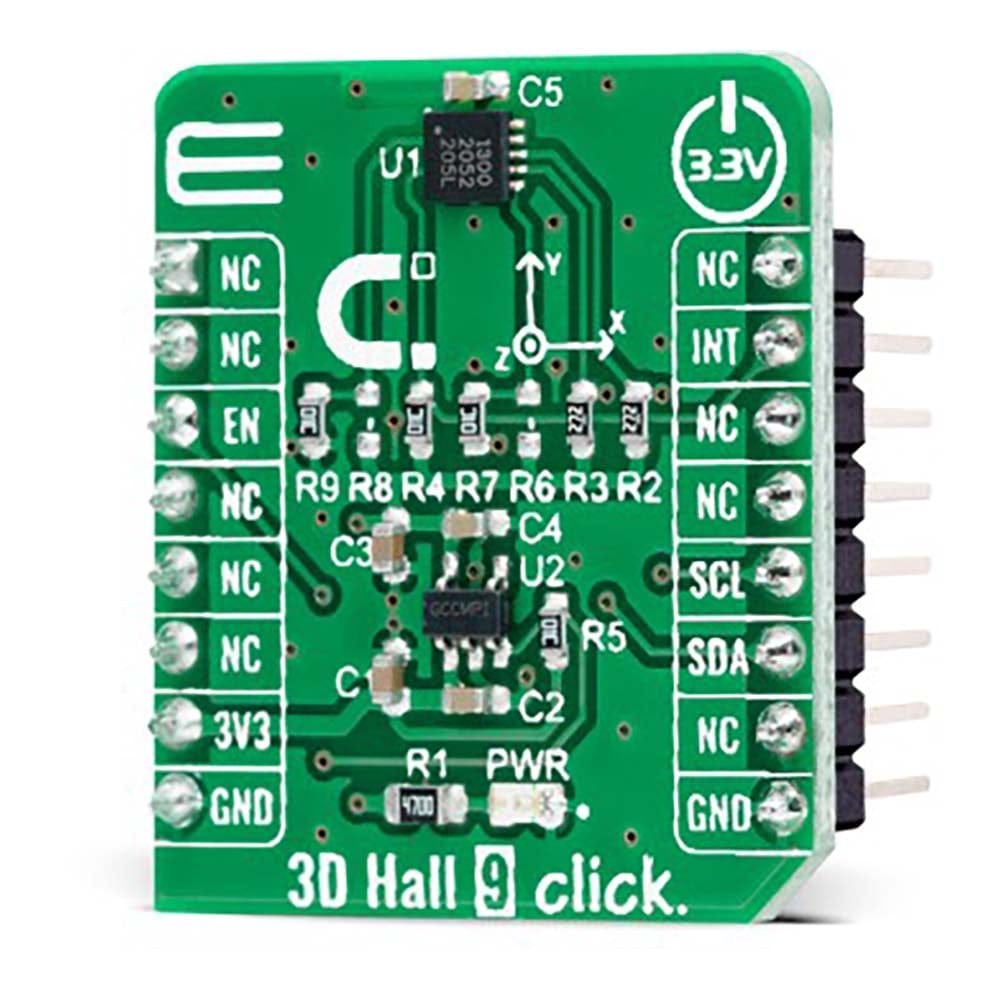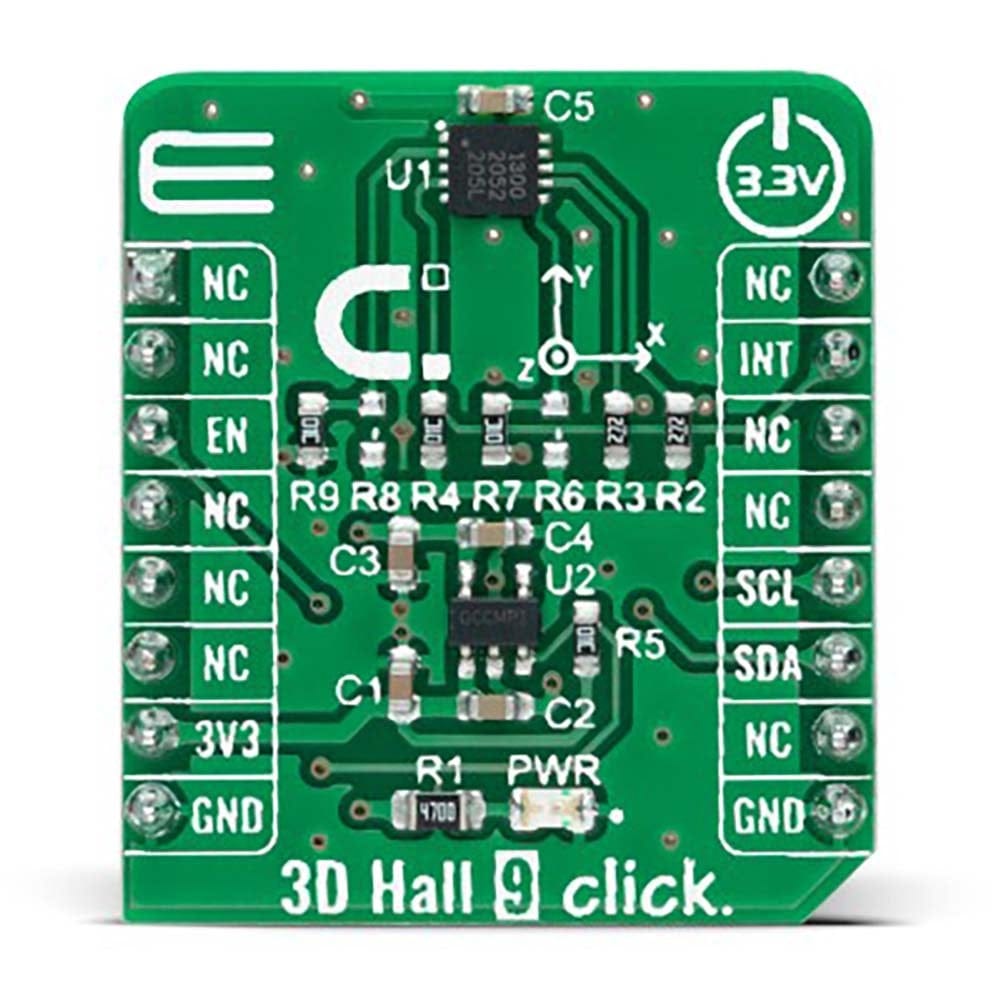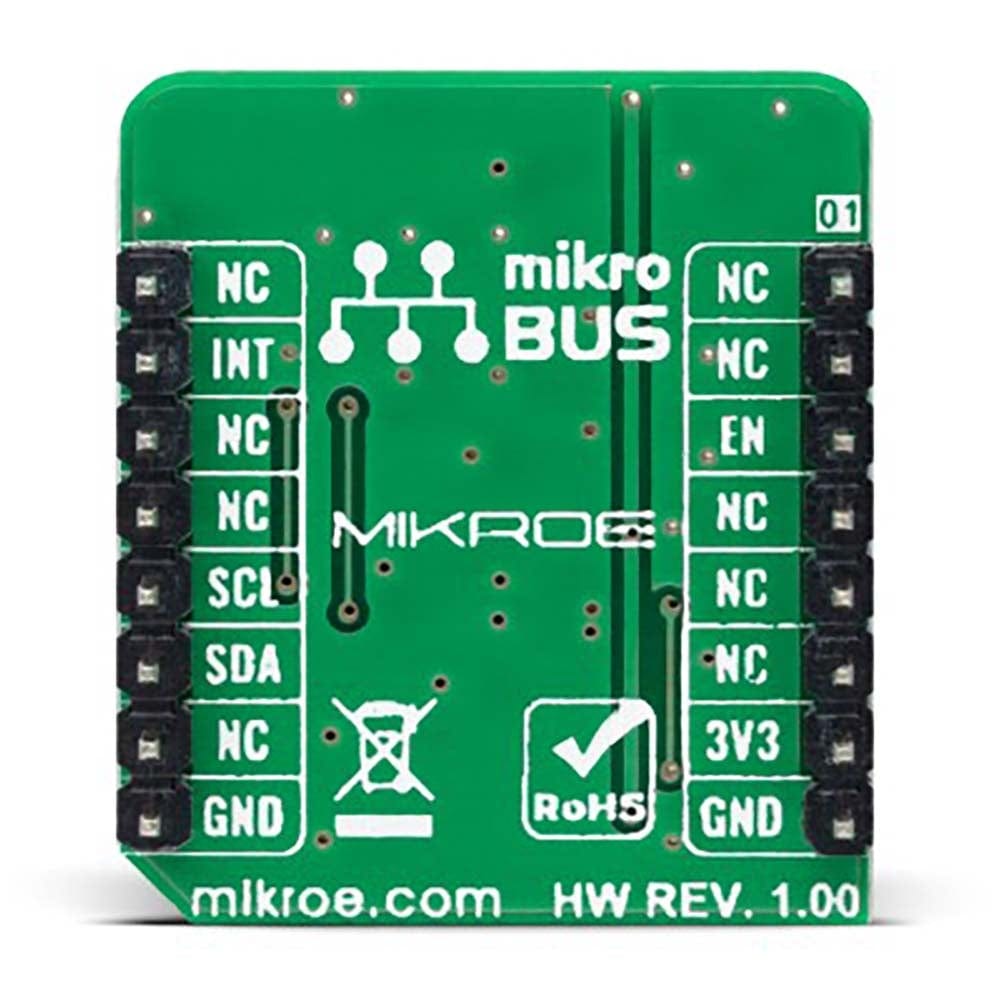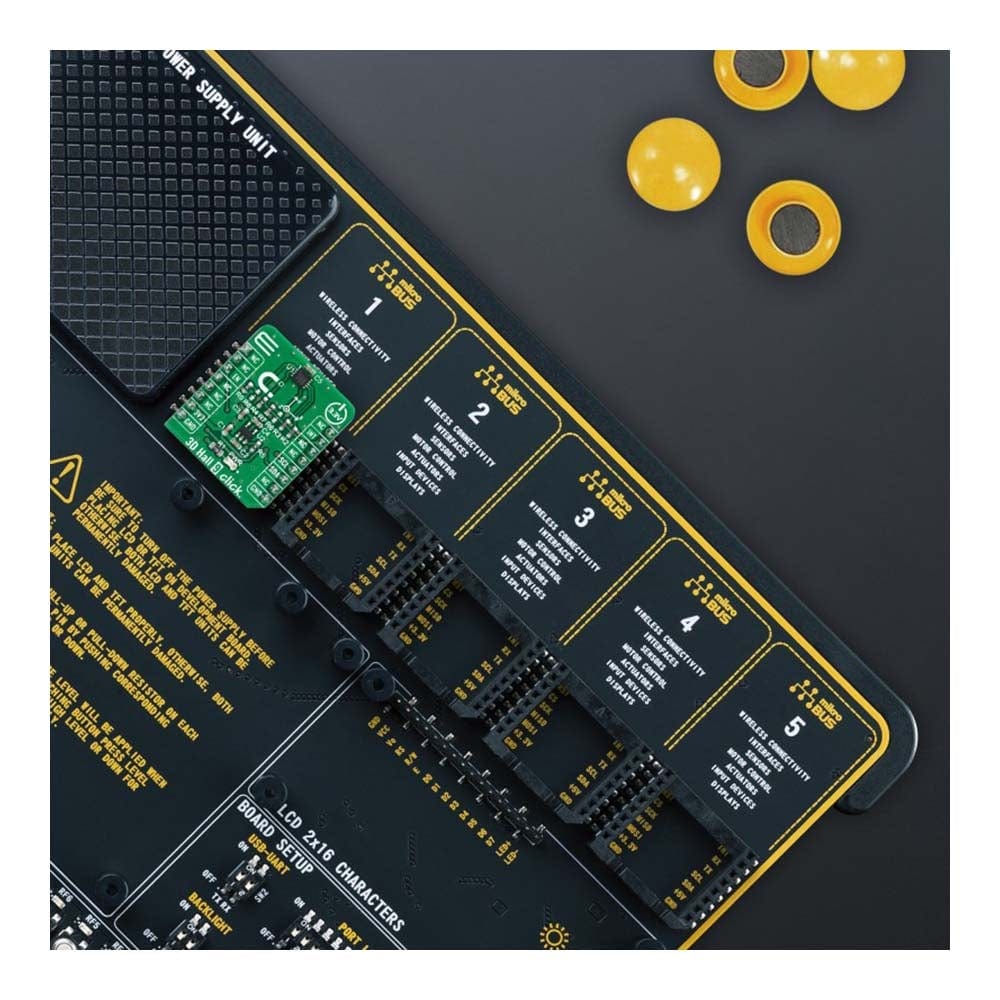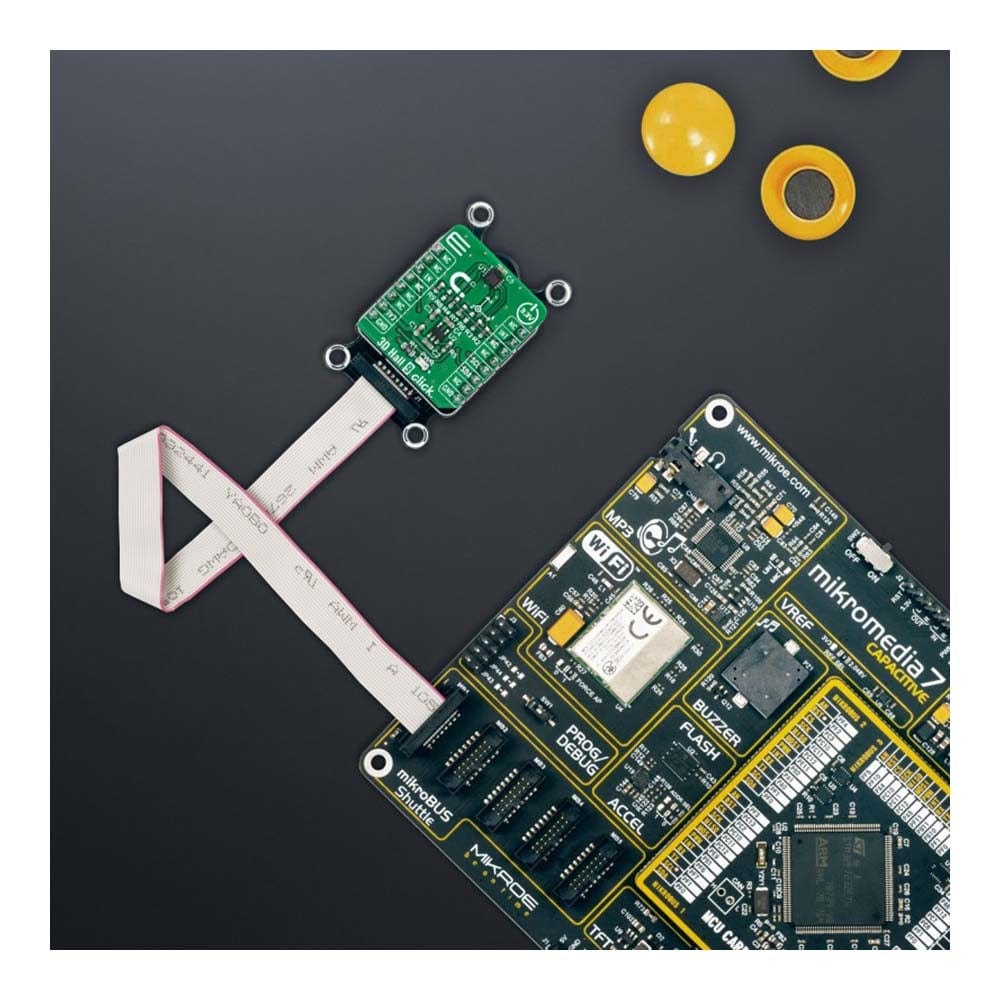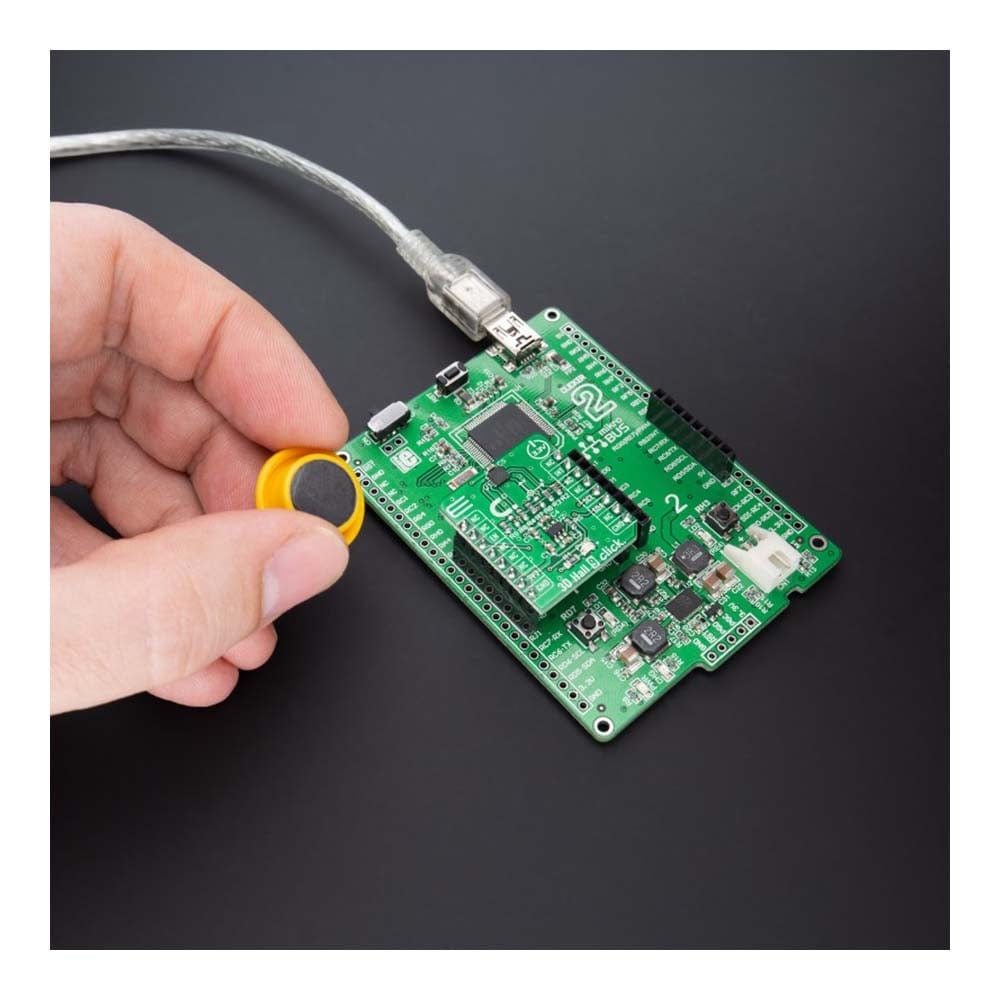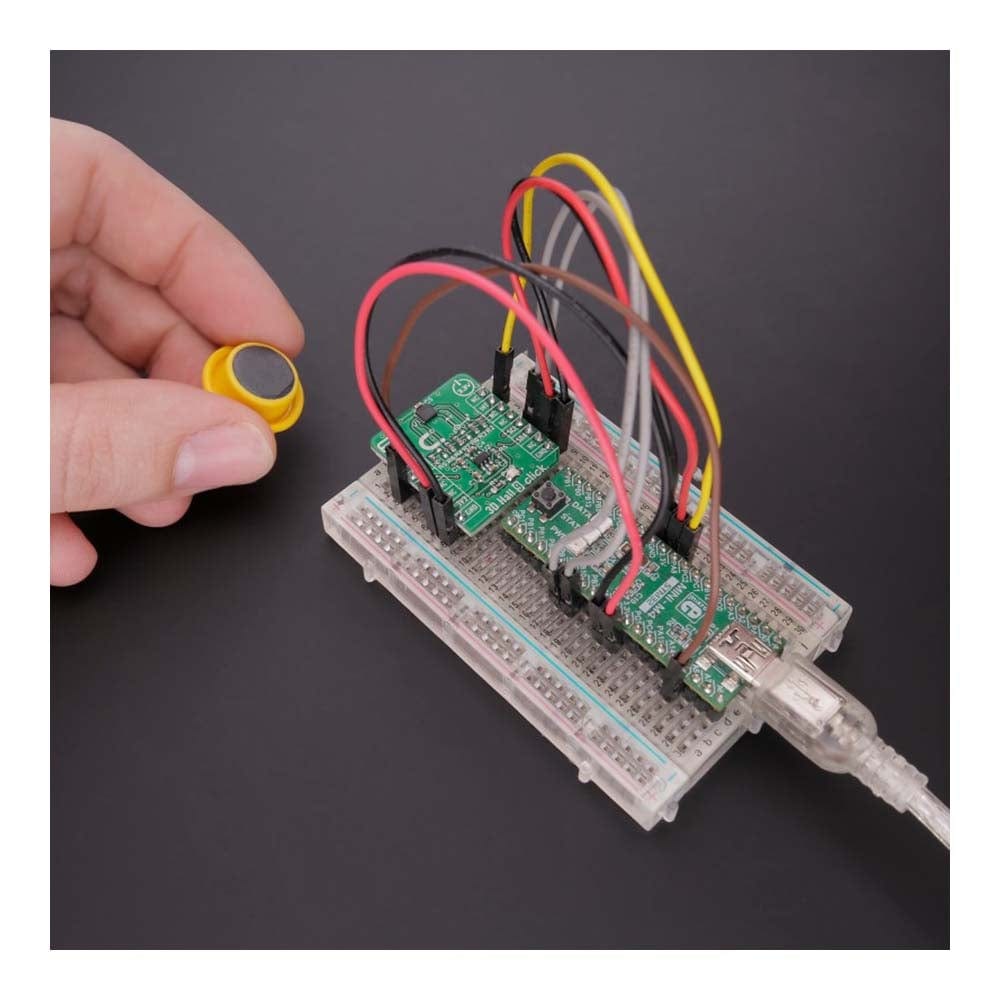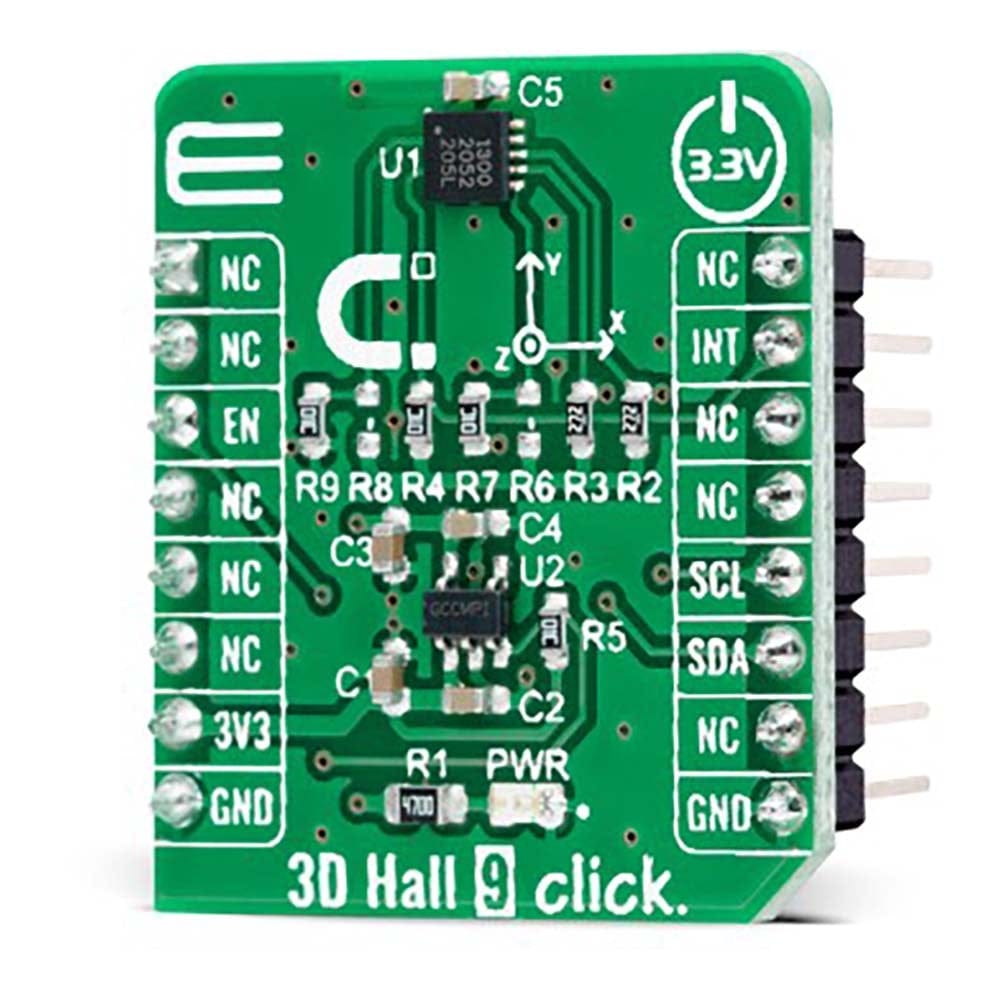
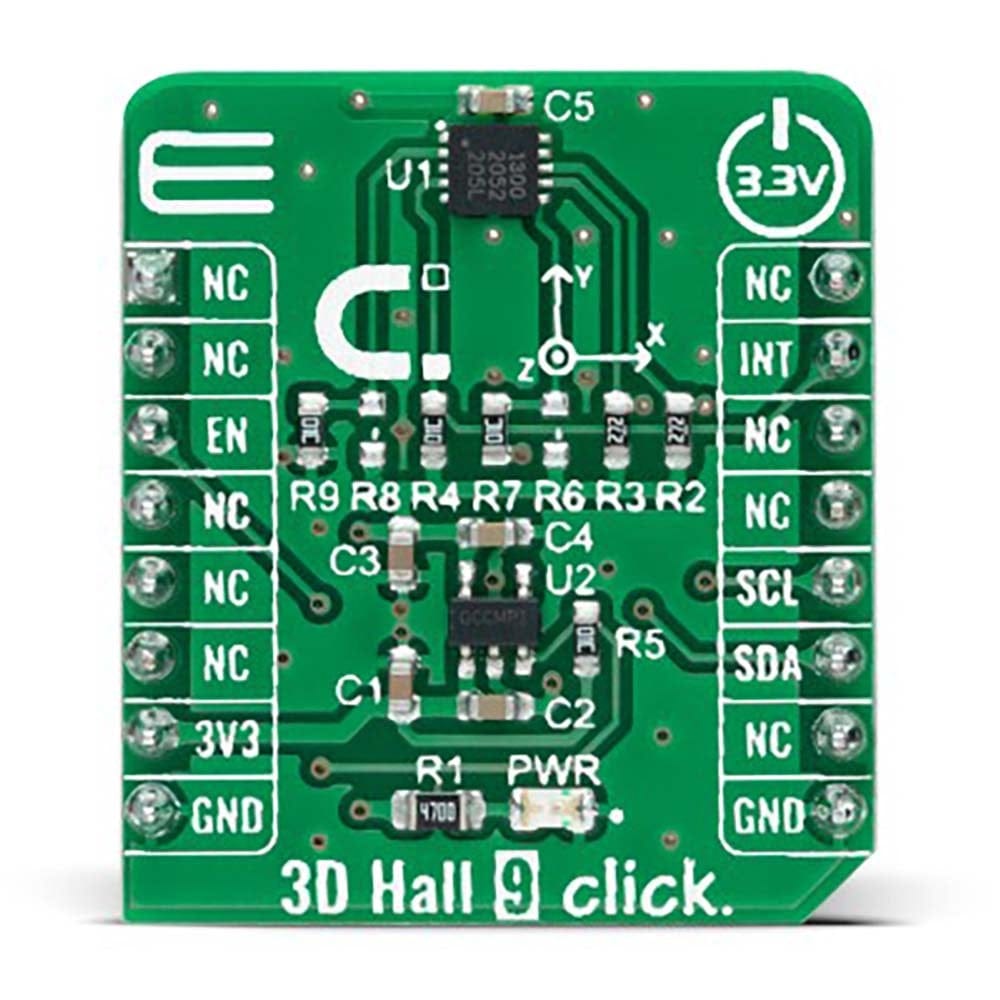
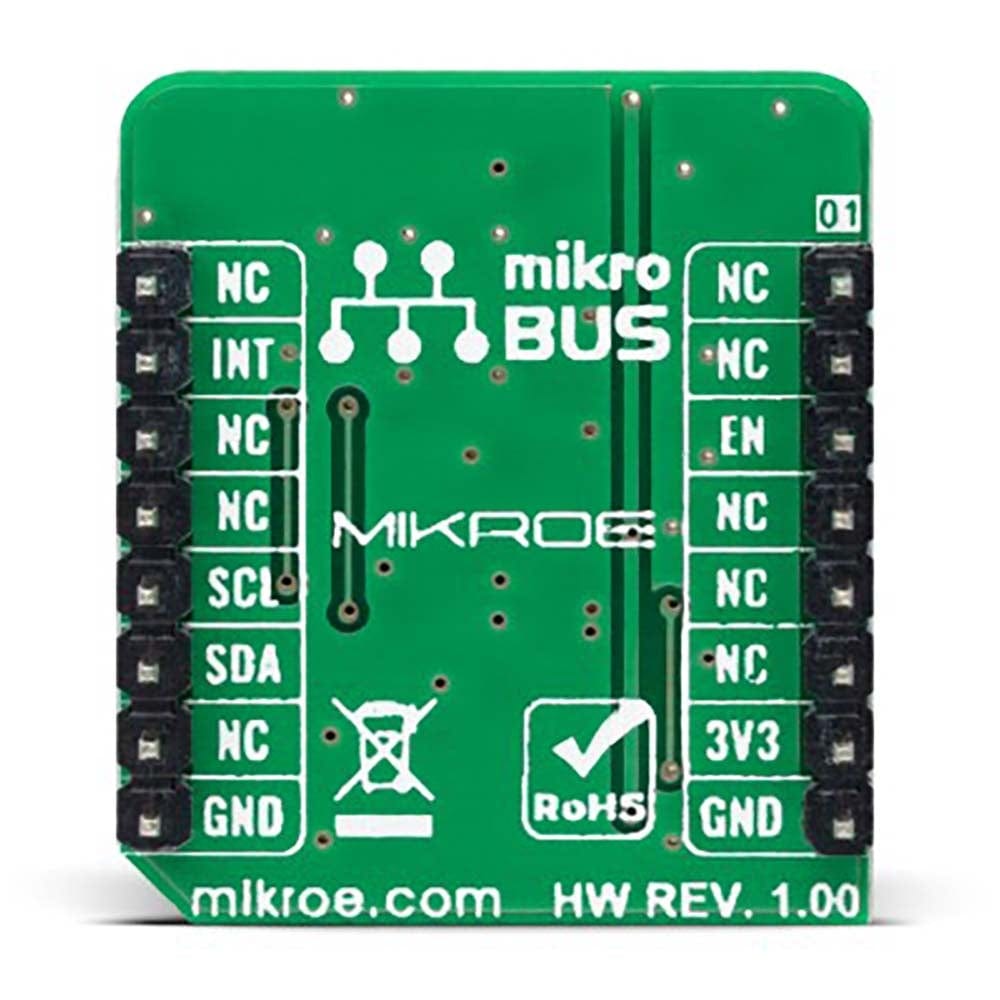
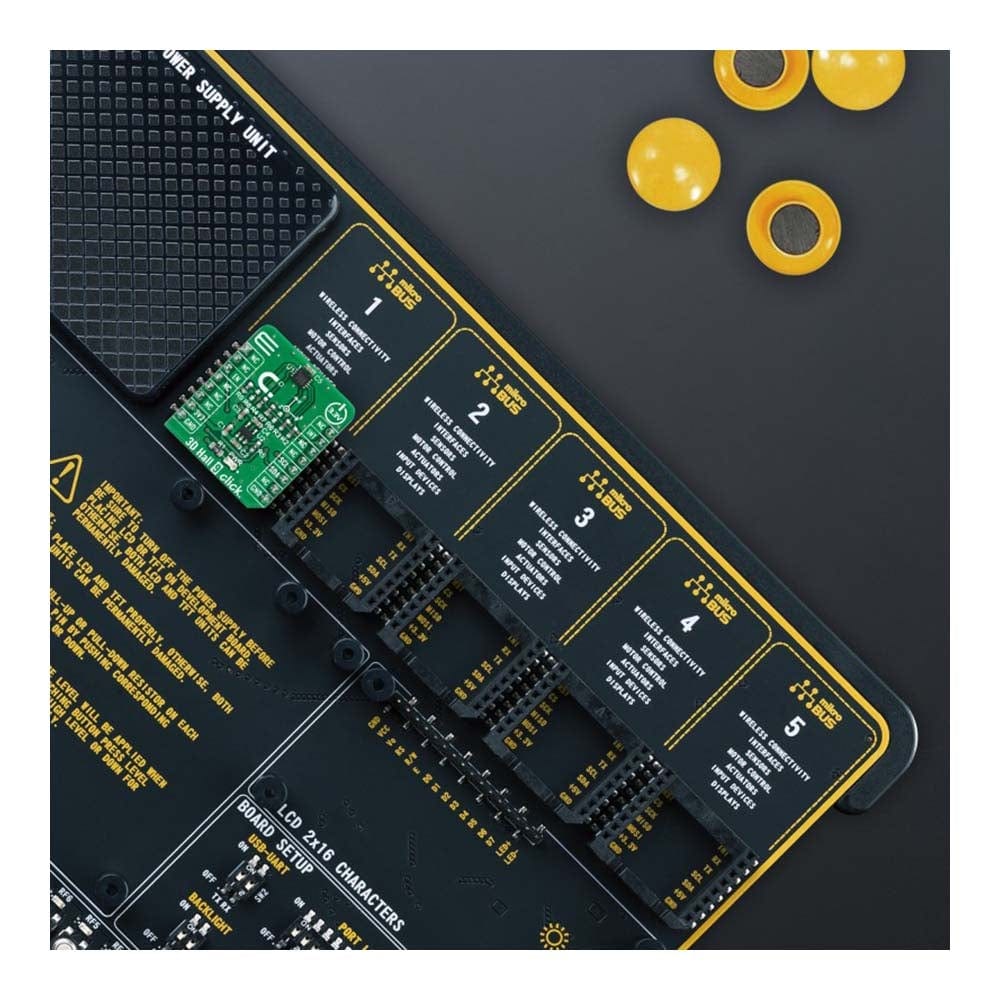
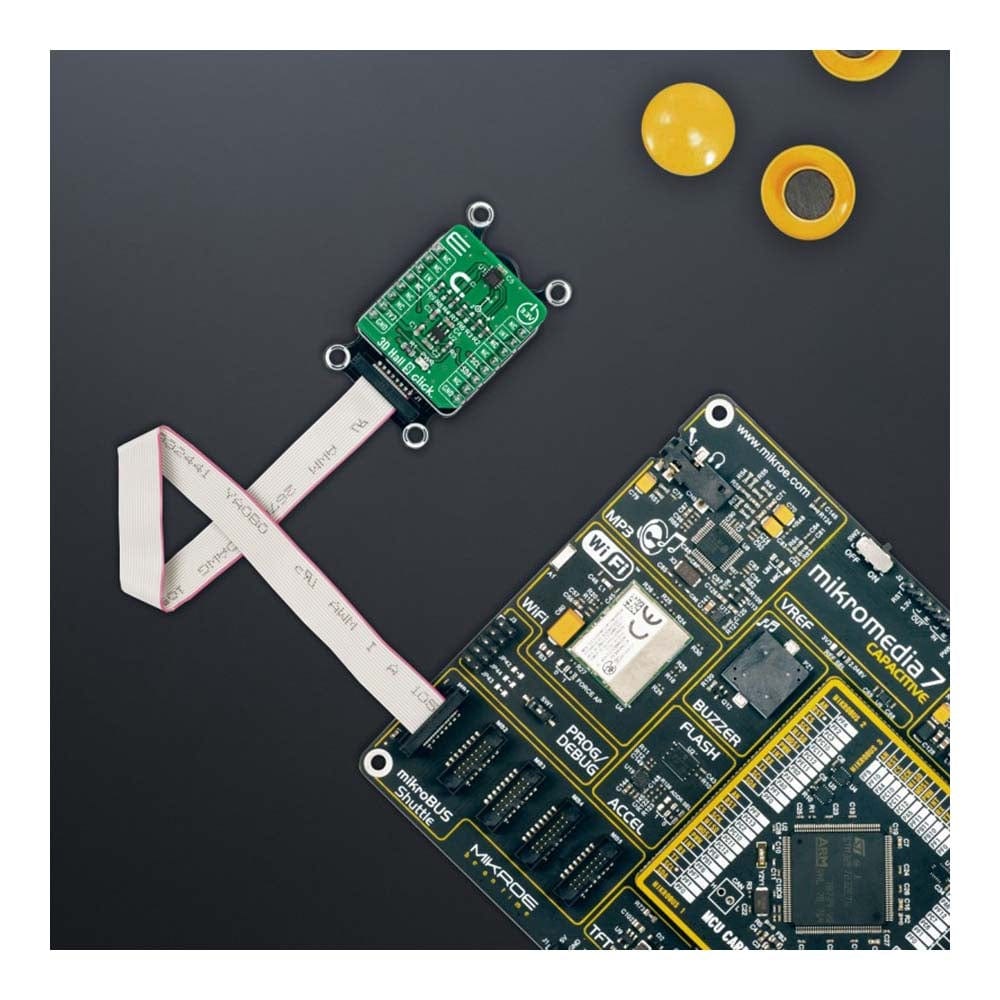
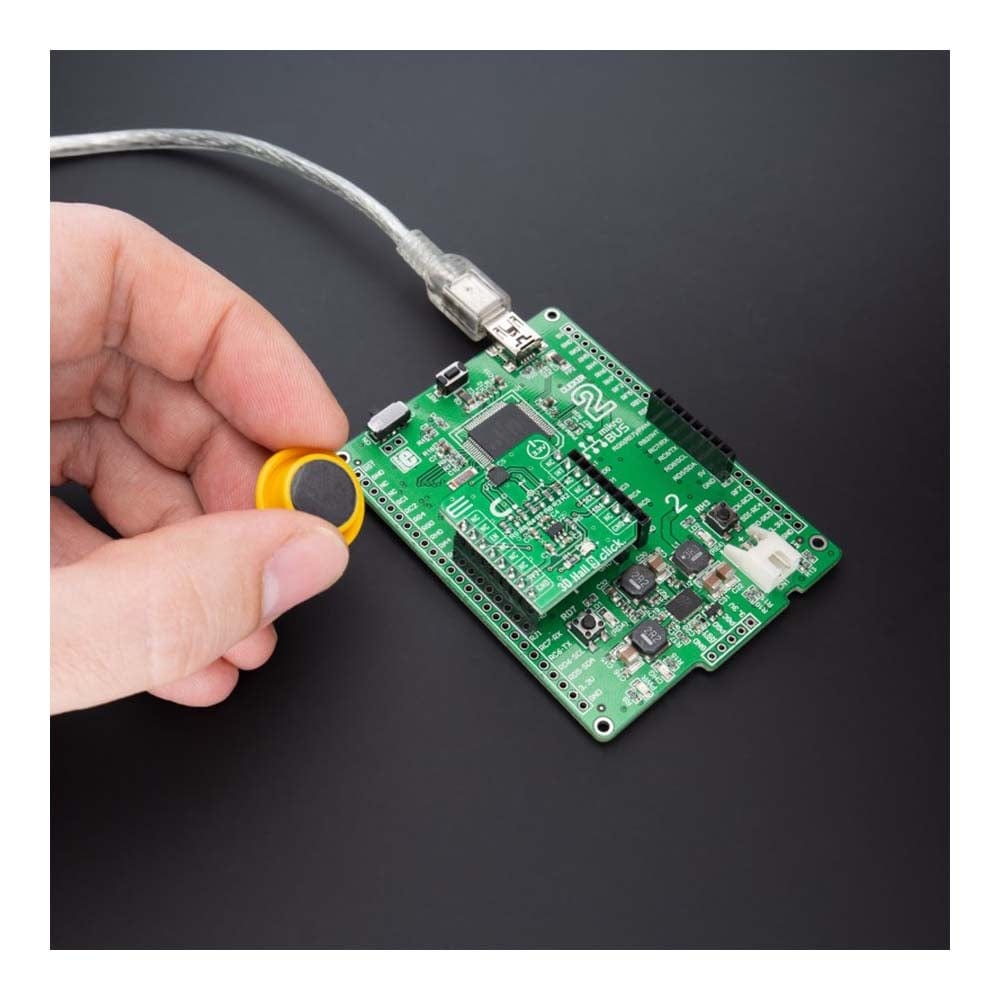
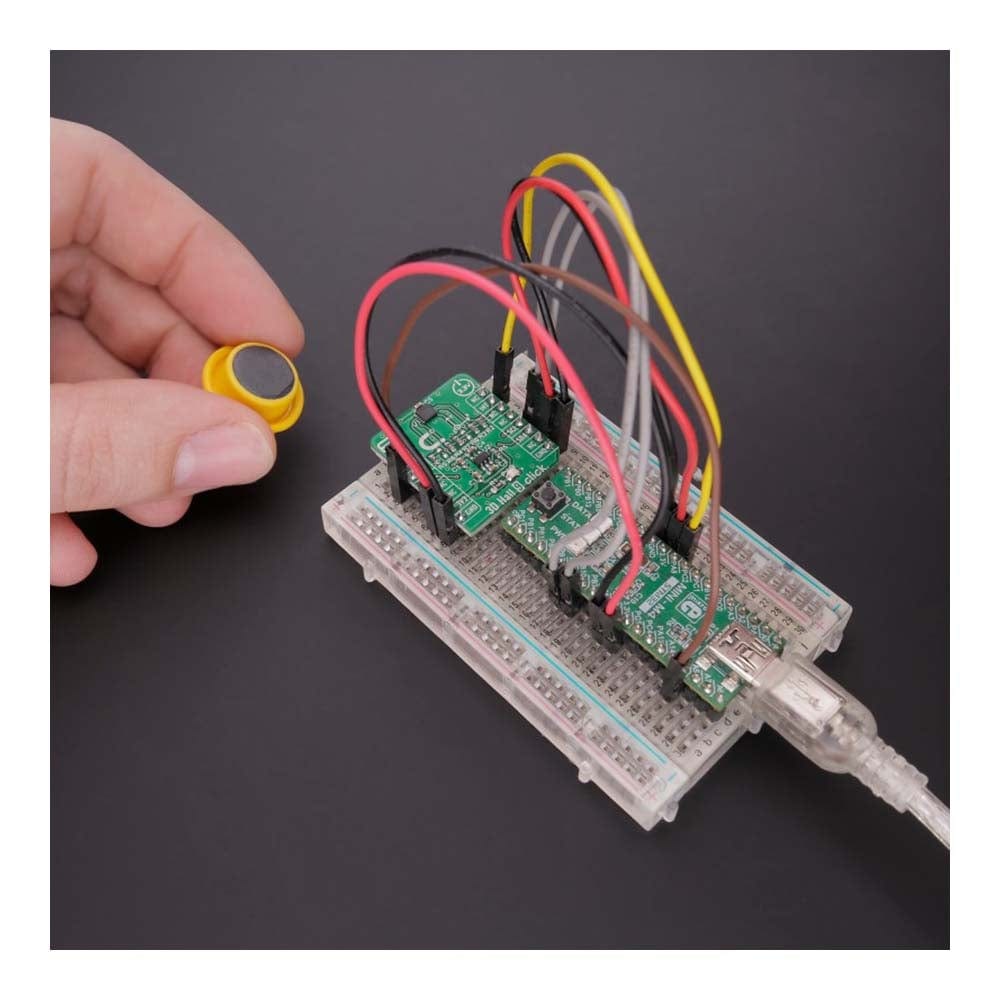
Key Features
Overview
The 3D Hall 9 Click Board™ is a compact add-on board used to detect the strength of a magnetic field in all three dimensions. This board features the ALS31300, a 3D linear Hall-effect sensor with digital output and advanced low power management from Allegro Microsystems. The ALS31300 features an I2C interface, enabling it to be easily configured by MCU with the measurement data provided in digital format of 12-bits corresponding to the magnetic field measured in each X, Y, and Z axes. It also provides the ability to set different I2C slave addresses (16 unique addresses) by populating the appropriate resistors desired by the user. Power management of the ALS31300 is highly configurable, allowing for system-level optimization of supply current and performance.
The 3D Hall 9 Click Board™ is suitable for various applications, such as 3D sensing for head-on linear motion, slide-by position sensing, and rotation angle measurements.
Downloads
La carte 3D Hall 9 Click Board™ est une carte complémentaire compacte utilisée pour détecter la force d'un champ magnétique dans les trois dimensions. Cette carte comprend l'ALS31300, un capteur à effet Hall linéaire 3D avec sortie numérique et gestion avancée de faible consommation d'Allegro Microsystems. L'ALS31300 dispose d'une interface I2C, ce qui lui permet d'être facilement configuré par MCU avec les données de mesure fournies au format numérique de 12 bits correspondant au champ magnétique mesuré dans chaque axe X, Y et Z. Il offre également la possibilité de définir différentes adresses esclaves I2C (16 adresses uniques) en renseignant les résistances appropriées souhaitées par l'utilisateur. La gestion de l'alimentation de l'ALS31300 est hautement configurable, ce qui permet une optimisation du courant d'alimentation et des performances au niveau du système.
Le 3D Hall 9 Click Board™ convient à diverses applications, telles que la détection 3D pour le mouvement linéaire frontal, la détection de position par glissement et les mesures d'angle de rotation.
| General Information | |
|---|---|
Part Number (SKU) |
MIKROE-4948
|
Manufacturer |
|
| Physical and Mechanical | |
Weight |
0.02 kg
|
| Other | |
Country of Origin |
|
HS Code Customs Tariff code
|
|
EAN |
8606027389757
|
Warranty |
|
Frequently Asked Questions
Have a Question?
Be the first to ask a question about this.

